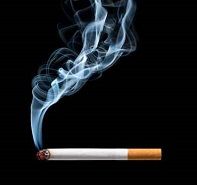Secondhand Smoke Exposure Early in Life Can Lead to Increased Risk of Developing Atrial Fibrillation
Study results suggest that exposure to secondhand smoke either in the womb or early in childhood also leads to an increased risk of atrial fibrillation later in life.

It has long been established that cigarette smoking significantly increases the risk of developing blood and cardiovascular difficulties, including atrial fibrillation (AF). But a new study in HeartRhythm suggests that exposure to secondhand smoke (SHS) either in the womb or early in childhood also leads to an increased risk of AF later in life.
While the study authors cautioned that they did not determine that SHS definitely caused AF, they found that people exposed to it in the womb or during childhood were about 40% more likely to report atrial fibrillation than those who weren't exposed. The study is the latest in a series of findings on the deleterious effects of tobacco usage even for those not directly smoking cigarettes.
Earlier this year, a study led by University of South Carolina researchers and published in the American Journal of Preventive Medicine found that exposure to SHS raises the risk for stroke by about 30%, which is independent of other factors.
Atrial fibrillation causes the heart’s upper and lower chambers to stop working together, potentially leading to chest pain, heart failure, and increased risk of stroke. Cigarette smoking has been linked to AF through much earlier research, but this is among the first studies to show a significant link to the condition through exposure to SHS.
The HeartRhythm study involved a cross-sectional analysis of data from participants enrolled in the Health eHeart Study, an internet-based, longitudinal cardiovascular cohort study, who completed baseline SHS exposure and medical conditions questionnaires. SHS was assessed through a validated 22-question survey, and prevalent AF was assessed by self-report, with validation of a subset (n = 42) by review of electronic medical records.
Of 4,976 participants, 593 (11.9%) reported having AF. In unadjusted analyses, patients with AF were more likely to have been exposed to SHS in utero, as a child, as an adult, at home, and at work. After multivariable adjustment for potential confounders, having had a smoking parent during gestational development and residing with a smoker during childhood were each significantly associated with AF. Both positive associations were more pronounced among patients without risk factors for AF.
The study authors noted that the impact of SHS may be more obvious in people without other more significant atrial fibrillation risk factors. Preventing second-hand smoke exposure in early development and life may be one way to reduce the risk of atrial fibrillation later on, the researchers observe.